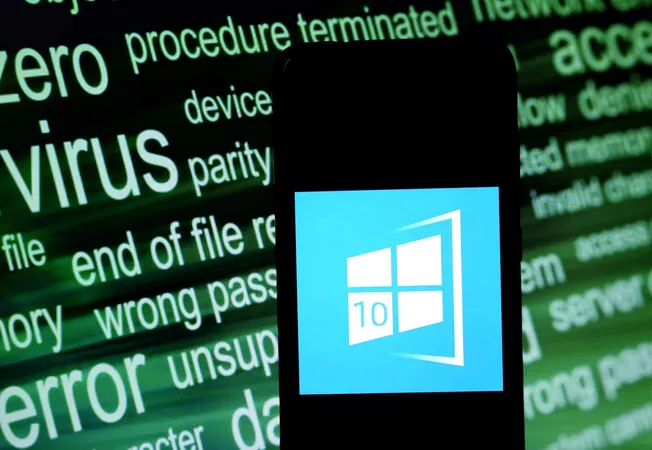
Urgent Warning for Windows Users: New Zero-Day Threat Discovered – Act NOW to Protect Your Data!
2024-12-06
Author: Benjamin
Urgent Warning for Windows Users: New Zero-Day Threat Discovered – Act NOW to Protect Your Data!
A new critical security threat has been uncovered that affects all versions of Windows, from 7 all the way to 11, including Windows Server 2008 R2 and later. Researchers at Acros Security have revealed the existence of a zero-day vulnerability – a serious risk that could allow cybercriminals to steal sensitive credentials without any current fix from Microsoft.
What Is This Zero-Day Vulnerability?
The newly discovered zero-day exploit targets the Windows NT LAN Manager (NTLM), a suite of security protocols used for user authentication and data integrity. With no official patch provided to address this flaw, attackers are being given a free pass to access users' NTLM credentials. This means that simply viewing a malicious file in Windows Explorer can expose your information to malicious actors. Researchers are keeping full technical details under wraps to prevent exploitation until an official fix is issued by Microsoft.
According to Mitja Kolsek, founder of Acros Security and operator of the 0patch vulnerability patch management platform, "The vulnerability allows an attacker to obtain user’s NTLM credentials simply by having the user view a malicious file." This exploit can be activated just by accessing a shared folder or a USB disk containing the harmful file, or even just checking the downloads folder where the file was saved after visiting an attacker’s website.
How Can You Safeguard Your Windows System?
Until Microsoft releases an official patch, here are steps you can take to protect your Windows system:
1. **Apply the Micropatch**: Acros Security has rolled out a free micropatch through its 0patch platform that can temporarily mitigate this vulnerability. This solution is available for all versions of Windows, including those beyond Microsoft’s official support.
2. **Be Cautious with Files**: Avoid opening suspicious files or folders, especially those from unknown sources. If you receive a file or link from a questionable email or message, it’s best to err on the side of caution and avoid engaging with it.
3. **Regular Updates**: Keep your operating system and all software updated. Frequent updates can help seal security gaps that attackers might exploit.
4. **Use Strong Passwords**: Use complex, unique passwords for your accounts, and consider enabling two-factor authentication wherever possible to bolster your security.
5. **Backup Your Data**: Regularly back up your data to protect against data loss in the event of a breach. Cloud and physical backups can ensure your information remains safe.
What's Next?
This situation is still unfolding, and we urge Windows users to stay alert for any updates from Microsoft regarding an official fix. Meanwhile, ensure you're vigilant in your online activities. We’ve reached out to Microsoft for further information, and we will provide updates as they become available.
Stay safe, and don’t let cybercriminals take control of your information!









 Brasil (PT)
Brasil (PT)
 Canada (EN)
Canada (EN)
 Chile (ES)
Chile (ES)
 España (ES)
España (ES)
 France (FR)
France (FR)
 Hong Kong (EN)
Hong Kong (EN)
 Italia (IT)
Italia (IT)
 日本 (JA)
日本 (JA)
 Magyarország (HU)
Magyarország (HU)
 Norge (NO)
Norge (NO)
 Polska (PL)
Polska (PL)
 Schweiz (DE)
Schweiz (DE)
 Singapore (EN)
Singapore (EN)
 Sverige (SV)
Sverige (SV)
 Suomi (FI)
Suomi (FI)
 Türkiye (TR)
Türkiye (TR)